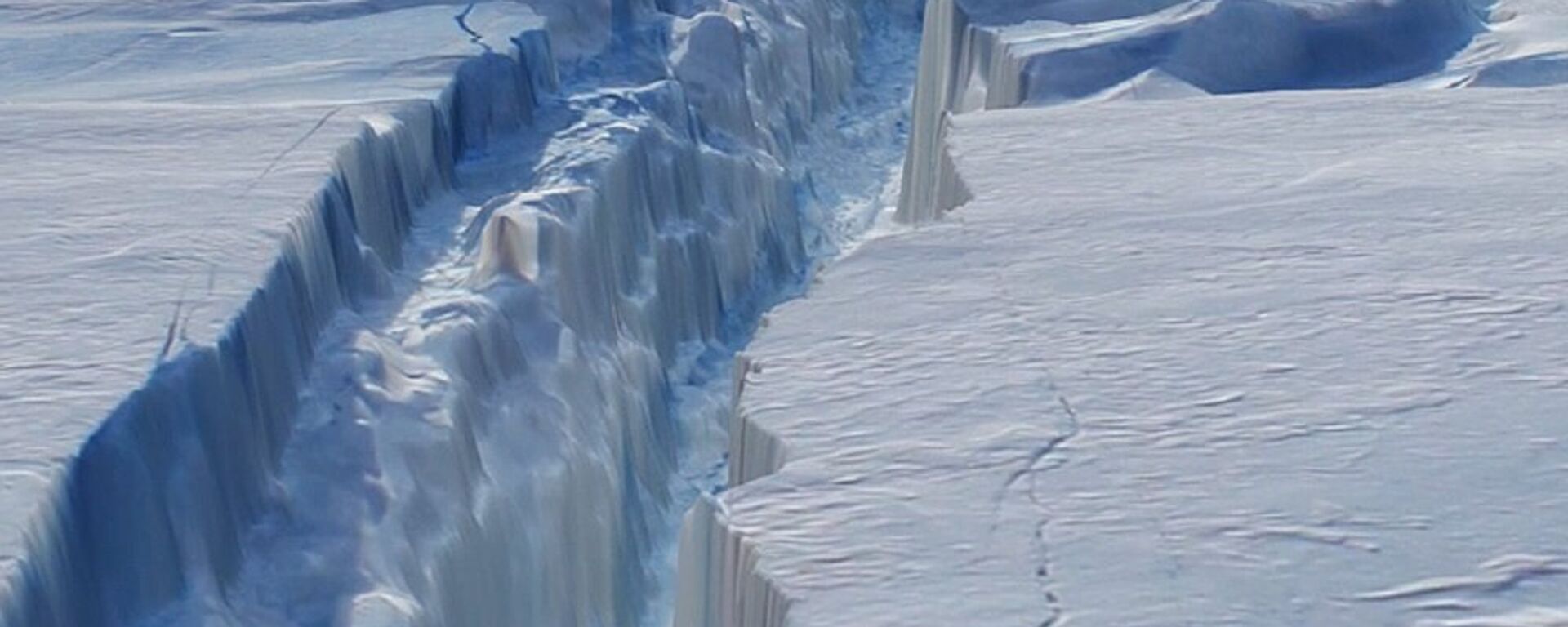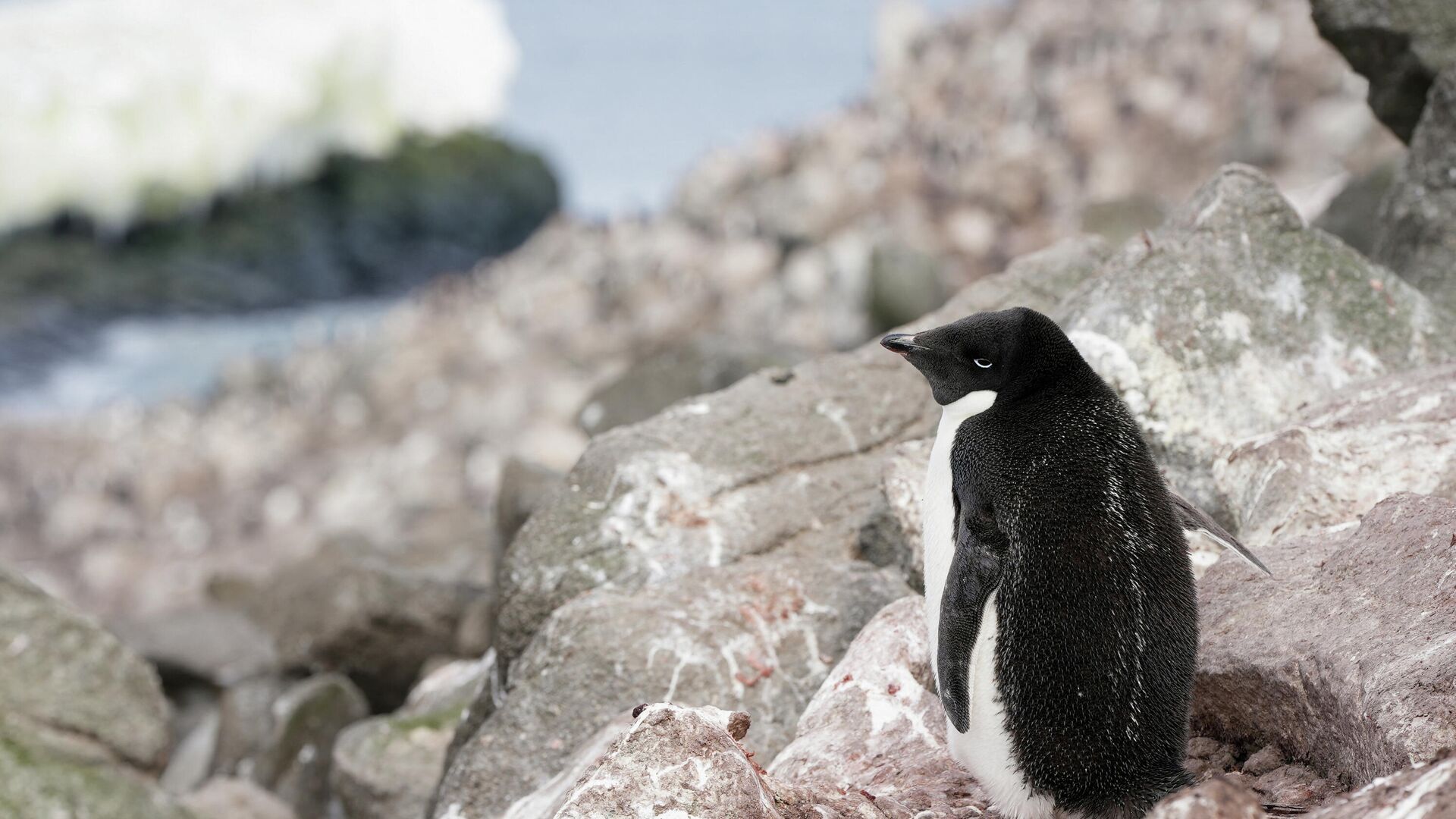https://sputnikglobe.com/20220214/climate-change-threatens-to-further-damage-already-fragile-antarctic-ecosystem-new-study-shows-1093033637.html
Climate Change Threatens to Further Damage Already Fragile Antarctic Ecosystem, New Study Shows
Climate Change Threatens to Further Damage Already Fragile Antarctic Ecosystem, New Study Shows
Sputnik International
Two of Antarctica’s native flowering plants are spreading rapidly due to warmer temperatures caused by climate change. These changes may begin on a small... 14.02.2022, Sputnik International
2022-02-14T20:27+0000
2022-02-14T20:27+0000
2022-08-06T13:32+0000
climate change
antarctic
antarctica
ecosystem
study
science & tech
https://cdn1.img.sputnikglobe.com/img/07e6/01/1e/1092613182_0:211:2990:1893_1920x0_80_0_0_f34e6c375babaa029bdbcb4c99797443.jpg
In a new study conducted by professor Nicoletta Cannone and her team from the University of Insubria in Como, Italy, researchers warn the increasing growth of Antarctic hairgrass (Deschampsia antarctica) and Antarctic pearlwort (Colobanthus quitensis) could upend the fragile ecosystem of the Antarctic.The rapid spread of these two plants will change the area’s soil acidity, bacteria, and fungi in the soil, as well as how organic matter decomposes.Cannone and her team have been studying the two native flowers across Signy Island from 2009 to 2019, leading to their discovery of the first recorded plant growth change in the southern Antarctic.According to the study, the hairgrass plant grew five times faster between 2009 and 2018 than between 1960 and 2009. And pearlwort grew at a speed of almost ten times more. This rapid change will cause a major effect on “all components of terrestrial ecosystems,” said Connone.While climate change is the primary culprit for the expansive growth of these two plants, the study explains that the declining population of the fur seal may have also played a role in aiding the speeding growth of these plants.Despite cooling in the continent’s summer temperature in 2012, at which the temperature was only slightly below 0°C, that brief period of cold did not influence the “vegetation community dynamics” on the island, according to the study. A strong summer warming resumed on Signy Island thereafter, with research showing strong and consistent warming over a recent 7 year period of 0.9°C.Scientists have already noted in a previous study published by the Proceedings of the National Academy of Sciences (PNAS), that the combination of the increase in fishing, tourism and warming weather could contribute to the introduction of invasive species.The increasing warmth of Antarctica’s temperature could create a habitable living space for nonnative species. Scientists warn that when invasive species are introduced to a region it could cause irreversible loss of wildlife, and with an environment as fragile as Antarctica’s, the possibility of irreparable damage to their ecosystem is a given.
https://sputnikglobe.com/20211214/antarctic-ice-shelf-holding-the-doomsday-glacier-could-shatter-within-five-years-scientists-warn-1091518952.html
antarctic
Sputnik International
feedback@sputniknews.com
+74956456601
MIA „Rossiya Segodnya“
2022
Sputnik International
feedback@sputniknews.com
+74956456601
MIA „Rossiya Segodnya“
News
en_EN
Sputnik International
feedback@sputniknews.com
+74956456601
MIA „Rossiya Segodnya“
Sputnik International
feedback@sputniknews.com
+74956456601
MIA „Rossiya Segodnya“
climate change, antarctic, antarctica, ecosystem, study, science & tech
climate change, antarctic, antarctica, ecosystem, study, science & tech
Climate Change Threatens to Further Damage Already Fragile Antarctic Ecosystem, New Study Shows
20:27 GMT 14.02.2022 (Updated: 13:32 GMT 06.08.2022) Two of Antarctica’s native flowering plants are spreading rapidly due to warmer temperatures caused by climate change. These changes may begin on a small scale, but their effects will take a toll on the entire surrounding area.
In a
new study conducted by professor Nicoletta Cannone and her team from the University of Insubria in Como, Italy, researchers warn the increasing growth of Antarctic hairgrass (
Deschampsia antarctica) and Antarctic pearlwort (
Colobanthus quitensis) could upend the fragile ecosystem of the Antarctic.
The rapid spread of these two plants will change the area’s soil acidity, bacteria, and fungi in the soil, as well as how organic matter decomposes.
“Antarctic terrestrial ecosystems respond quickly to these climate inputs. I was expecting an increase of these plants but not of this magnitude, we are receiving multiple evidences that a major change is occurring in Antarctica,” Cannone says.
Cannone and her team have been studying the two native flowers across Signy Island from 2009 to 2019, leading to their discovery of the first recorded plant growth change in the southern Antarctic.
According to the study, the hairgrass plant grew five times faster between 2009 and 2018 than between 1960 and 2009. And pearlwort grew at a speed of almost ten times more. This rapid change will cause a major effect on “all components of terrestrial ecosystems,” said Connone.
While climate change is the primary culprit for the expansive growth of these two plants, the study explains that the declining population of the fur seal may have also played a role in aiding the speeding growth of these plants.

14 December 2021, 16:28 GMT
Despite cooling in the continent’s summer temperature in 2012, at which the temperature was only slightly below 0°C, that brief period of cold did not influence the “vegetation community dynamics” on the island, according to the study. A strong summer warming resumed on Signy Island thereafter, with research showing strong and consistent warming over a recent 7 year period of 0.9°C.
Scientists have already noted in a previous study published by the Proceedings of the National Academy of Sciences (
PNAS), that the combination of the increase in fishing, tourism and warming weather could contribute to the introduction of invasive
species.
The increasing warmth of Antarctica’s temperature could create a habitable living space for nonnative species. Scientists warn that when invasive species are introduced to a region it could cause irreversible loss of wildlife, and with an environment as
fragile as Antarctica’s, the possibility of irreparable damage to their ecosystem is a given.


